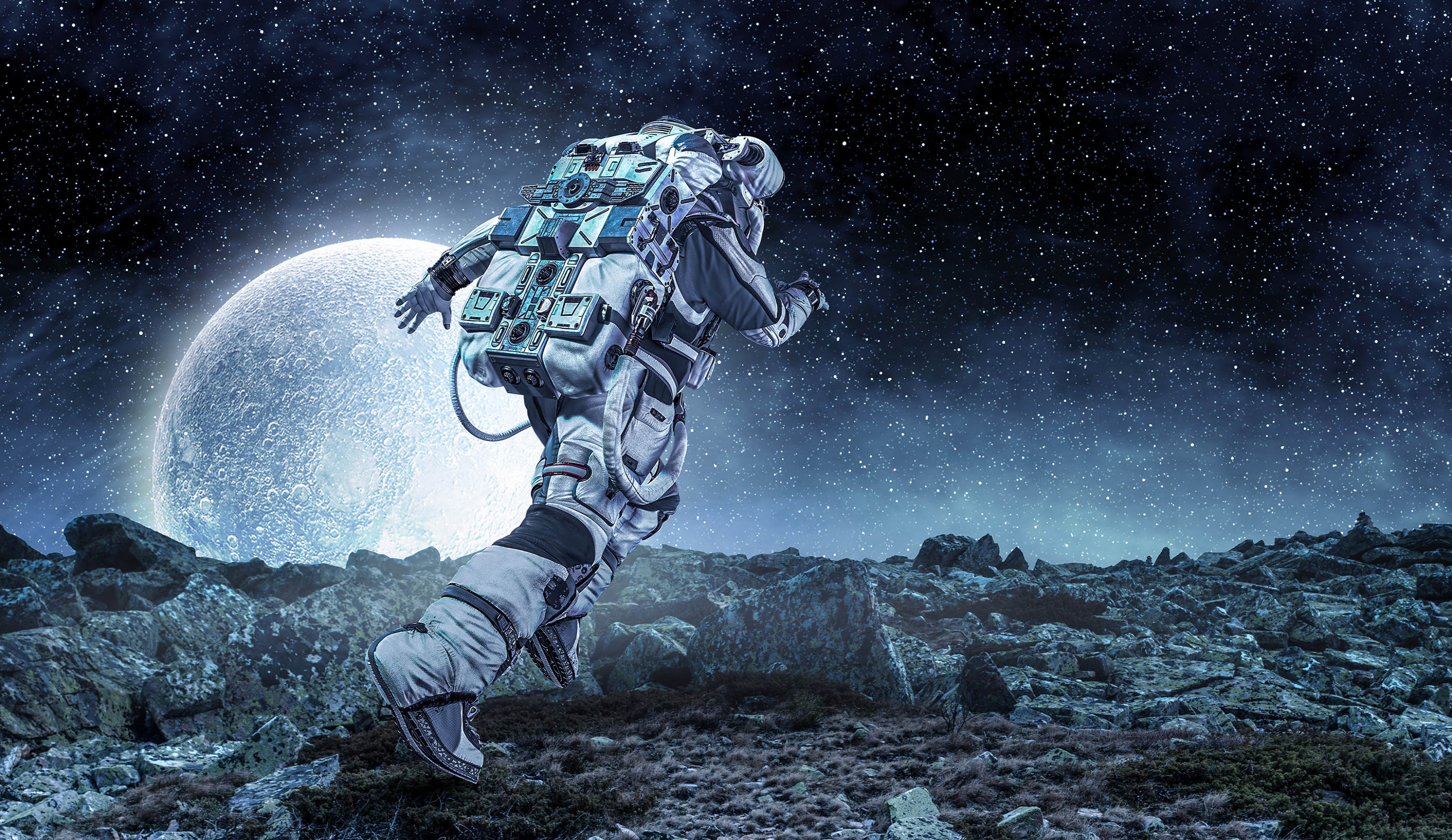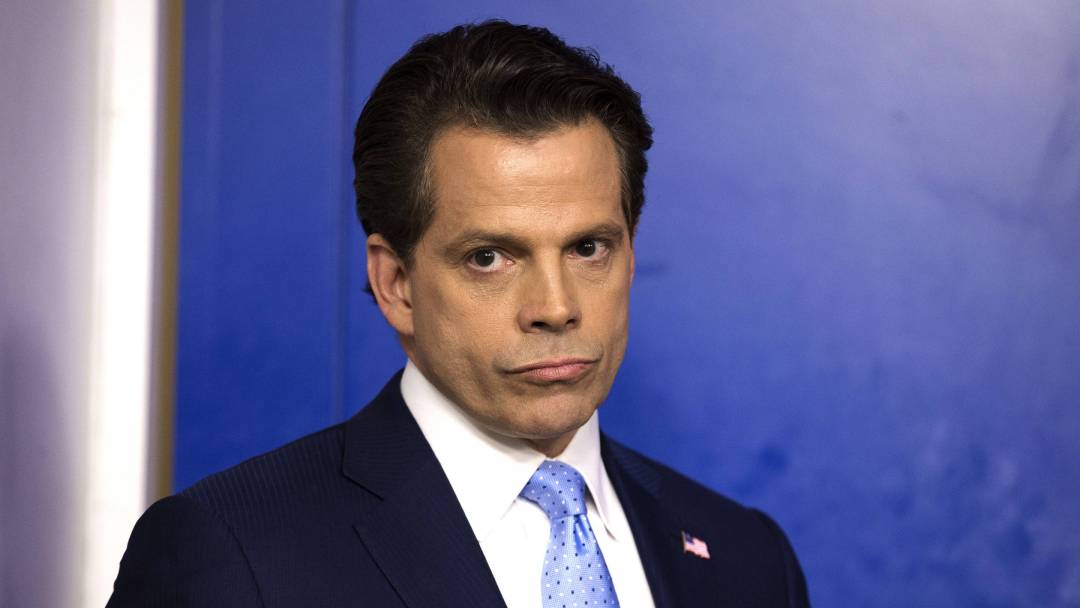
Meet the Man Racing Elon Musk to the Moon
“Making money is like having an orgasm, people who focus on it never get it,” Naveen Jain, billionaire founder of Moon Express, tells me while eating salty edamame peas in SoHo. “It’s like having sex, you have to enjoy the process and not focus on the end goal.” Naveen’s latest venture, Moon Express, founded in 2010, is the first private company to gain approval by the United States government to go to the moon. The approval came after U.S. officials consulted with federal agencies like NASA, the NSA and the State Department, because there were no laws in place regulating commercial entities exploring celestial worlds, let alone building trillion-dollar business around it.
If our home planet were to collide with an asteroid, the moon would most likely also be impacted. Still, the better answer is to live on the moon, use it as a training ground for adapting to differences in temperature, gravity and radiation, and then move our species to far-away Mars and other planets, to diversify our population among the galaxies. But to fund interplanetary living, a business first has to achieve enough financial milestones. Enter Moon Express.
A hundred and fifty years ago, aluminum was the most precious metal on earth. It was so valuable, in fact, that Napoleon III served only his most honored guests with aluminum cutlery. Other guests had to settle for mere gold. Today, we toss aluminum soda cans into the trash without thinking about it. Aluminum was so valued in the 19th century because it wasn’t yet possible to process it easily. That was until scientist-entrepreneurs figured out how to separate aluminum from its core via electrolysis.
Helium3 is currently worth $20,000 an ounce. In contrast, gold is worth $1,200 an ounce. Like aluminum once was, Helium3 is scarce. But thanks to robotic advancements, we now have the ability to mine it on the moon, where it is plentiful. Once we harvest it and bring it back to earth, nuclear fusion—the cleanest and most powerful energy available to mankind—can power the entire planet. Just a tiny bit of Helium3 from the moon can provide enough energy for several generations on our planet. By 2050, according to Jain, we will have 90-minute travel times to any point on Earth or the moon (it currently takes 3 days to get there), and Helium3 will be as common as a soda can. But first, Jain has to get there.
The Apollo program cost more than $100 billion dollars and had 400,000 employees spread throughout 20,000 firms and universities. Moon Express is bootstrapped with only 35 employees, supplemented with artificial intelligence. Its budget for a round-trip journey to the moon is less than $30 million dollars. How is this possible?
Fuel accounts for 93 percent of a rocket’s weight, and it takes 15/16ths of the rocket fuel just to breach the gravitational force holding Earth in place. The last 1/16th is used to travel the remaining distance to the moon. Since rocket fuel is heavy, you need more fuel just to carry the fuel needed for propulsion.
Like many Silicon Valley startups, Moon Express broke down this problem into parts and then designed a genius solution. The Earth has many orbital layers around it, so a rocket was built with an onboard booster. The idea is for the rocket to boost up into the lower orbit, do several elliptical orbits around the planet, and then boost onwards into higher and higher levels of orbit. In essence, the rocket would be doing gravity slingshots. Once pulled into the moon’s orbit, the rocket would do a burn transfer and have a soft landing onto the moon.
Because fuel is minimized, the rocket-lander can be significantly lighter and smaller, reducing material costs. And with reusable rockets just on the horizon, costs will only lie in the price of fuel. The same exponential tech making smartphones cheaper and more efficient every year is also making cheaper off-the-shelf parts for rockets. Jain thinks that in 10 years, people will be able to travel to the moon for $10,000. “My prediction is in the next 20 years, there’ll be a child born on the moon where the parents will be looking up and saying, ‘Son, we come from that planet.’”
In November 2008, India sent Chandrayaan, or “lunar vehicle” in Sanskrit, to the moon to advance its space mission. After landing on the moon’s South Pole, nicknamed The Eternal Darkness because the sun had not shone there in billions of years, its probes discovered something spectacular—water. Later, NASA rocket-bombed the area with the satellite LCROSS and miles of plumes of water erupted. Estimates say as much as 1.2 trillion pounds of lunar water lies underground.
The darkness helped preserve the precious frozen water, which not only enables human colonization, but when broken down, becomes oxygen for breathing and hydrogen for rocket fuel. This means astral fuel stations can be created on the moon and throughout the Milky Way, allowing us to travel further than we’ve ever had before—and to travel even cheaper.
After Russia launched the world’s first satellite in 1957, nations soon realized space laws were necessary to keep outer space from turning into the Wild West. Cold War antagonism and the space race between Russia and the United States pushed the United Nations to adopt the Outer Space Treaty of 1967 to police how countries behave in space. Out of these new space regulations came the rule of non-interference. This means that when Moon Express goes to the moon they can’t step on Neil Armstrong’s footprints or anything else that came before to preserve history. Likewise, future space-travelers can’t interfere with whatever Moon Express does.
One mile away from Eternal Darkness lies Eternal Light. This is not a sci-fi fantasy movie, but the actual names given by our most brilliant, nerdy rocket scientists. Here the sun shines 24/7, and solar panels can be placed to create a giant hotbed of energy. Also, the oxygen derived from the frozen water can be pumped into lava tubes buried underground, allowing for radiation-free living.
If Moon Express is able to take hold of both Eternal Light and Darkness, they are then strategically set to create the foundation for the space economy. It’s kind of like creating the next iPhone where future entrepreneurs can create apps like Snapchat, Pokémon GO or Uber. Nobody can anticipate what those “apps” will be, but there is plenty of opportunity to monetize interplanetary living. The potential for creating consumer applications is only limited by one’s creativity.
Space colonization has to be the future, because out there, there is more of everything. We just need to build the technologies to access it. According to Naveen, sustainability is a myth. At some point, you simply cannot create more of what you need. There has to be a change in mindset from conservation to creation—that’s how entrepreneurs think. With an infectious laugh, Naveen tells me, “Create more, because ultimately, you can never become rich by not spending. You become rich by creating and earning more.” But he does not measure his success by wealth, because that’s not the goal after all. Success, says Naveen, is measured by how many lives you impact. “Space travel is our only path forward to ensure our survival and create a limitless future for our children.”






